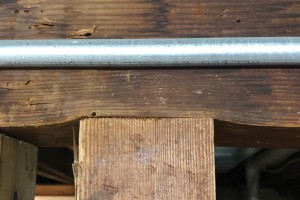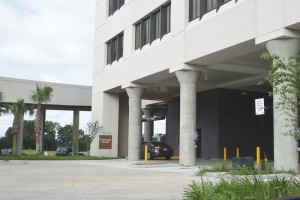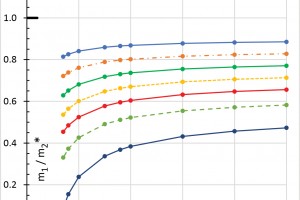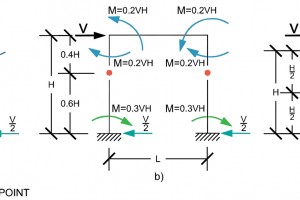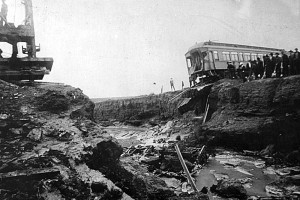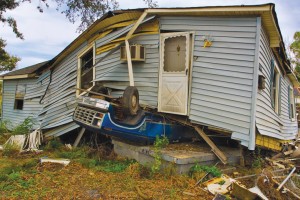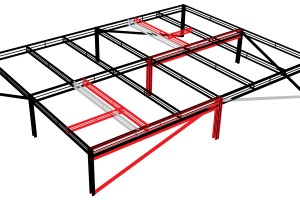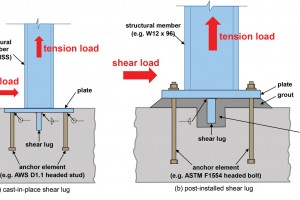Proper design of bearing intersections between mass timber members is critical to the overall success of a mass timber project. The details of these intersections have a significant effect on cost and schedule. This article focuses on the multi-story column condition, where loads from the column above need to be transferred down through the beam-column intersection, and the beams are supported using a bearing pocket instead of a bearing hanger (Figure 1).
…Review Category : Articles
COVID-19 Lessons for a More Resilient Future
“Since 2002, the U.S. has endured seven of the 10 most costly disasters in its history, with Hurricane Katrina and Superstorm Sandy topping the list. As a result, there is a need for best practices for resilience planning that address the increasing value-at-risk of U.S. infrastructure and communities. Communities, as a system, are particularly vulnerable to the effects of natural and human-caused disruptive events. Reliance on rebuild-as-before strategies is impractical and inefficient when dealing with persistent hazards. Instead, communities must break the cycle by enhancing their resilience with a systemic view of short- and long-run time horizons.”
NIST Special Publication 1197 – Community Resilience Economic Decision Guide for Buildings and Infrastructure Systems
…Part 2
This is Part 2 of a two-part series. Part 1 (STRUCTURE, September 2021) summarized two methods, including equations for finding available strengths for aluminum based on tests. It also includes plots of calculated safety factors for various conditions. Part 2 compares results from these methods. Please note that Figure numbering continues from Part 1.
…Engineers routinely need to analyze and design indeterminate structures. Today they would use any one of several analytical software packages commonly loaded on their computers. The programs are so powerful that it does not take long to develop the input and perform the analysis, even for a major building. Sifting through the output and finding the desired answers might be the greatest effort involved.
…Dry Creek Bridge Failure
On the Denver & Rio Grande Railroad running from El Paso on the Rio Grande River through Pueblo to Denver, Colorado, the World’s Fair Flyer was traveling southerly towards Pueblo on the early evening of August 8, 1904, during a severe storm. At approximately 8 miles north of Pueblo, the line crossed an arroyo (generally dry creek bed). The arroyo was about 100 feet wide and 14 feet deep with steep banks.
…Part 2: A Marriage of Codes and Artistry
Each year severe weather, in the form of storms ripping through our states and along our coasts, leaves a swath of destruction of buildings and infrastructure and many lost lives. The heaviest of these storm events (high wind) is the tornado. However, if you have experienced the power of a tornado, you are likely to agree that the event is much more than wind intensification. The National Centers for Environmental Information, a division of the National Oceanic and Atmospheric Administration (NOAA), charts a trendline increase in the frequency of tornadoes since 1950, with the occasional spikes like the U.S. saw in 2004 – 1,819 tornadoes.
…Applying Computational Design Logic to the Quality Control Process
The future of structural engineering is inextricably linked with computational design. Algorithms and data will be the basis upon which the industry develops. That is not to say that engineering judgment and expertise will be replaced by artificial intelligence. Instead, the possibilities of computer programming will continue to enhance the capabilities of structural engineers just as the widespread adoption of the computer did in the 1980s. Some engineers in the industry have been working in the field of computational design for over a decade. Others have been slower to adapt.
…Lessons Learned for Planning a Successful Structural Investigation
The client is on board, the contract is signed, and all eyes are on you – how can you ensure your upcoming structural investigation is successful? After participating in many on-site investigations from coast to coast, here are some tips for successful planning and execution from the author’s perspective as a young engineer beginning to lead project teams.
…On this month’s anniversary of the attack on 9/11, we remember the lives lost on that day and in the subsequent years while addressing the aftermath. We remember the shock and anger we felt when our world changed. We grapple with our role in preventing tragedies like that.
…
Erratum
Figure 2(b) and Figure 3(b) in the article incorrectly show the bearing area (Aef,sl) as a T-shaped configuration. This configuration is only relevant when stiffeners are used.
Since the shear lug in these illustrations does not include stiffeners, the bearing area (Aef,sl) should be shown as a rectangular configuration. If stiffeners are installed, the leading edge of the stiffener and the area of the shear lug extending 2tsl on either side of the stiffener would be included in Aef,sl. The author apologizes for any confusion this may have caused. (This Erratum has been added to the online version of the article, www.STRUCTUREmag.org.)
…

